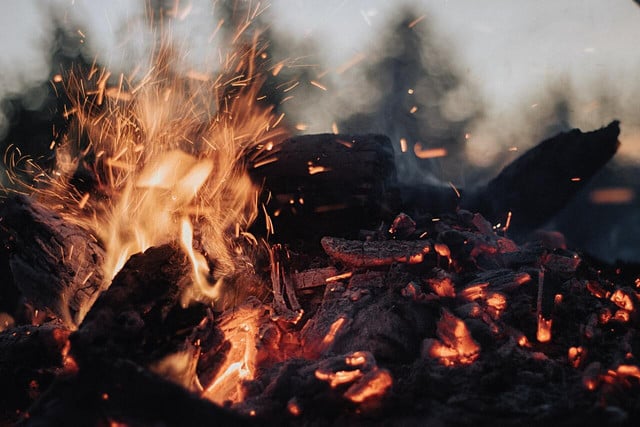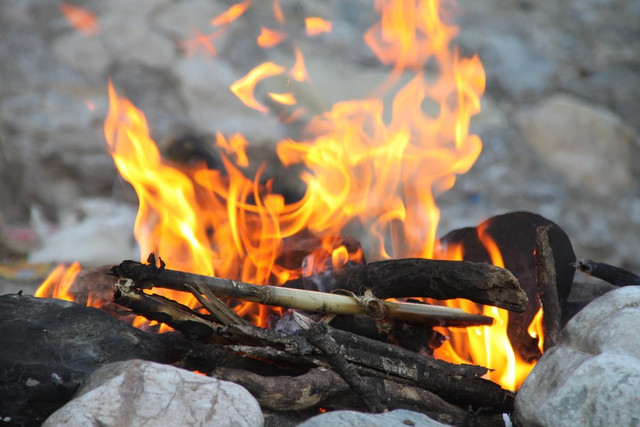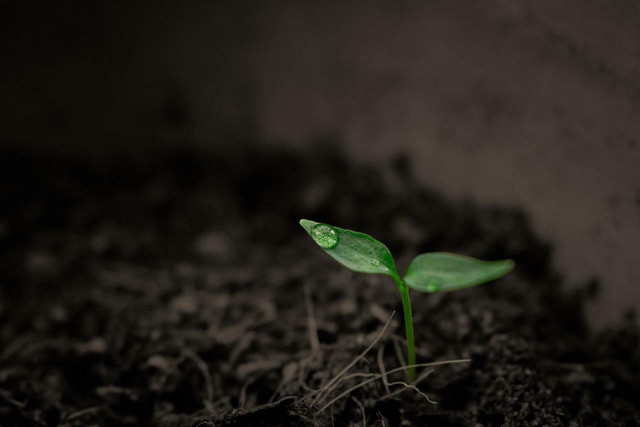Making biochar is easy, sustainable and can provide your lawn or yard with vital nutrients. Let’s take a look at this natural form of charcoal.
Biochar is essentially an all-natural version of charcoal that you can make from non-chemical bits of wood like branches, twigs and other dry plant material in your garden. Making biochar is a straightforward process that you can easily do at home.
Biochar, a nutrient-rich “natural charcoal,” is created when you burn wood. It is exceptionally absorbent and has a wide range of applications. Biochar can be reused in the garden time and time again. This allows for more sustainable, long-term gardening practices.
The Benefits of Making Biochar



One of the most significant advantages of creating biochar is that it is nutrient-dense and takes years to fully decompose and break down in your garden. With its many crevices and fractures, biochar provides a haven for soil microorganisms. These microorganisms cling to the holes in the charcoal-like material once rubbed into the ground.
Due to the high carbon concentration of biochar, microorganisms can thrive better than they would naturally, and they reproduce (and thus break down) at a considerably slower rate. So, it takes longer for the soil to become depleted of nutrients. As a result, the usefulness of composts and other organic waste for soil improvement is prolonged.
You can use biochar to fertilize your grass, yard or garden, resulting in a blooming, healthy landscape. By crushing the used charcoal and adding it to your soil, you improve the alkalinity of the soil and absorb toxins. Mineral-deficient soil benefits greatly from adding biochar made from wood ash since it can neutralize the soil’s acidity while replenishing nutrients like calcium, potassium, and magnesium.
Biochar stores the carbon dioxide plants absorb from the atmosphere and keeps it in the soil. That makes it a carbon-negative gardening tool that some believe will help our quest to become carbon-neutral.
Fortunately, making biochar is both easy and inexpensive. It’s also a terrific fertilizer that benefits plants and soil over time and slowly releases beneficial nutrients. Furthermore, the procedure can be renewed for years and years, keeping your garden thriving and sustainable.
Step-by-Step Guide To Making Biochar at Home



Preparation time: Roughly one month
Instructions:
- First things first — make an open fire somewhere safe in your garden. Check the fire codes in your area before you start, as safety comes first. Gather a lot of natural wood, a mix of small twigs, off-cuts, and smaller branches. Make sure to stack your sticks on a bed of stones, a fire pit, or an open drum, so you don’t damage the ground underneath.
- Start the fire while taking safety precautions.
- Add wood to the pile to keep the small blaze burning.
- When the flames die down, and the twig pile begins to smolder, completely drown the fire with water. When the wood is ready, the sticks should be blackened, with a white coating beginning to form on the charred wood.
- The trick is to wet the wood before it burns to ash. When it gets the consistency of charcoal, you know you’ve done it correctly. It’s fine if not all of the wood is entirely burned.
- Once the wood cools down, collect the charred remains and store them in a bucket, container, or pot until you’re ready to use them.
- Take the charred wood bits and grind or crumble them into a powder. You can also leave it in small chunks around your yard.
- Put the burned wood in a compost bin, or pour some nutrient-rich liquid into the container you’re keeping the wood in. Mixing it into compost lets it absorb valuable microbes.
- Stir the charred mixture thoroughly and set it aside for a month or more.
- Once this incubating time is complete, the biochar mixture is ready to be integrated into your soil.
- Mix it with compost. Make sure you don’t damage the PH of your soil by mixing the biochar incorrectly. A general rule of thumb is to keep a ratio of 80% compost to 20% biochar before you mix it into the soil.
- Using your hands or a tiller, spread it around and work it deeply into the soil.
Eco-Friendly Sustainability Suggestions



When making biochar, it is important to create a material that will not absorb all the nutrients from the original soil during the decaying process. Including chemical-free and natural nutrients as you make it ensures you don’t irrevocably harm soil pH and pollute the earth.
If you distribute biochar around your yard before mixing it with nutrients from compost or incubation liquid, it will absorb valuable nutrients from the soil. Admittedly, this is somewhat counterintuitive. Here are some recommendations for making biochar as environmentally friendly as possible:
- Adding charred wood to your compost pile is one of the most eco-friendly and cost-free solutions we’ve found for creating nutrient-rich biochar.
- You can make biochar using nutrient-rich liquids like fish pond water — or if you’re comfortable with it, urine.
- We also recommend that you cover your mixture as it rests to avoid rain washing it out. It also keeps unwanted creepy crawlies and other pests away.
Read more:
- What Is Guerrilla Gardening?
- What You Can Compost, What You Can’t — and Why
- Permaculture Designs: 7 Ideas for Your Sustainable Garden
- Native Gardening for Wildlife: Benefits and Tips for Beginners
Do you like this post?








